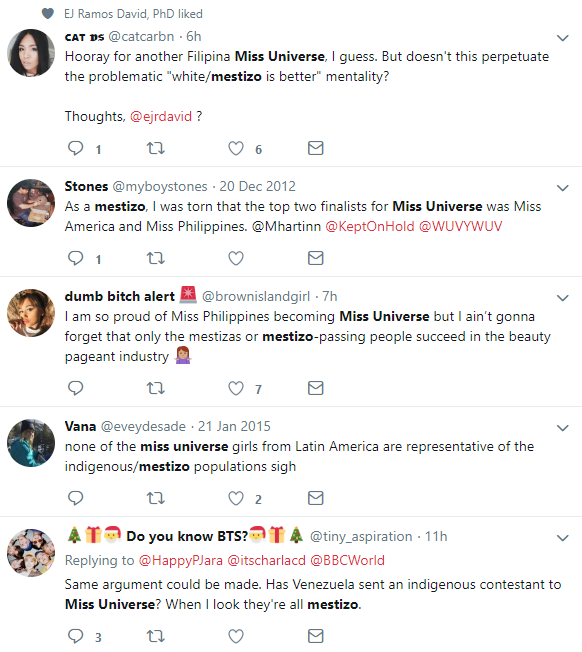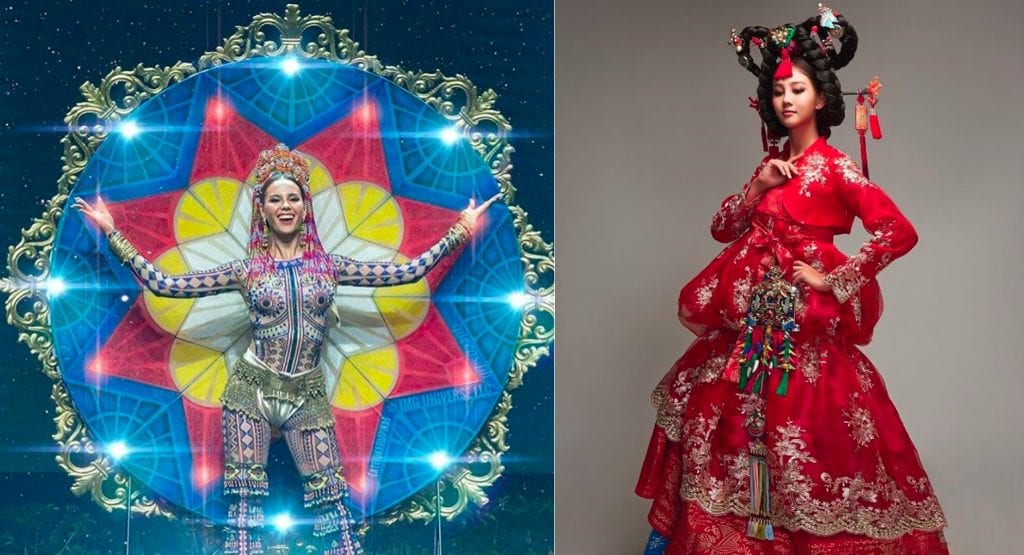Why The Winners of Miss Universe Always Look White
Every year I nervously watch the Miss Universe competition to see which white-passing beauty queen will take home the crown.
“Come on down Miss Racially Ambiguous model/actor and claim your scholarship prize of $5,000! Don’t spend it all in one semester!”
The winner of this year’s 2018 Miss Universe crown went to Catriona Gray, a 5″10 Filipino-Scottish model from Australia. On paper, Catriona Gray boasts an impressive resume: she graduated from the Berklee College of Music, has a black belt in Choi Kwang Do, and can sing, draw, and model. But it’s not Catriona’s extracurricular activities that have drawn the criticism of social media, it’s her face.
People on social media pointed out that Catriona Gray benefits from mestizo (a mixed-race Filipino with European/Spanish features) privilege and that her victory isn’t a true win for Filipinos.

I agree with this argument, however, I’d like to offer some context because I don’t think Catriona Gray is at fault. If we want to break down the issue with beauty pageants being dominated by white-passing contestants, we need to understand a few key points.
Beauty Pageants Are Expensive As Hell And Only The Rich Can Afford To Compete

File this under “stuff I didn’t know about until a year ago” but I had no idea how expensive it was to be a beauty pageant contestant. In a contest where looks are the primary criteria for evaluation, women are encouraged to spend thousands on a single competition if they want a shot at winning.
Pageant fees, oodles of makeup, evening gowns, interview outfits, modeling and pageant coaches, PR agents and dietician fees all add up to thousands of dollars that the beauty contestant must pay for out-of-pocket. Overall costs can range from $900 to $3,000 per contest. Sure, you could compete while wearing a $30 Fashion Nova outfit, but if your competitors are sporting designer brands, you almost have to pay just as much as everyone else if you want to keep up.
Only the top five or ten contestants get prize money while the rest of the women who paid just as much to compete will never get their money back.
Similar to a sports athlete who trains every day, beauty contestants practice their skills in modeling, acting, and building up their personal brand. This can be an expensive game where only the financially privileged get to play. If you can afford all the coaches and outfits that’ll give you the edge, you just might win.
Fortunately, some of the women at the Miss Universe level gain sponsorships from businesses and brands, so some of these women are given a free pass to chase their dreams. But if you can’t secure a sponsorship, your pathway to success is severely hindered by your inability to pay for better gowns, makeup, and hair.
Let’s Be Clear: Miss Universe Is Not A Beauty Pageant. It’s A Job Interview.
Before the 2018 Miss Universe contest even started, Catriona Gray had an advantage over her contemporaries: she was the former Miss World Philippines back in 2016 and was awarded multiple sponsorships from hotels, beach resorts, and fashion brands. She was already an established public figure in the Philippines who modeled on the cover of magazines and lived the life of a pageant champion.
This gets into the heart of why I think beauty pageants always choose white-passing contestants. Even though the Miss Universe Organization makes a profit from ticket sales, media coverage, and broadcasting the event on TV, the prize money given to the winners comes from various brands, companies, and organizations who sponsored the event.
If you visit the Miss Universe website and visit their sponsorship pages, you’ll see the following companies listed: Sherri Hill, Chi Hairecare, Yamamay, and High Five Casino. And if you actually visit these websites or check out their social media posts for more than five seconds, what do you notice right away?
All of the models are white or white-passing.
Beauty pageant winners are selected because they best represent the interests of corporate sponsors, not the countries and cultures they claim. As much as we Filipinos want a brown-skinned Pinay with ethnic features to represent the people, we’re not the ones signing the checks, so we’re at the mercy of sponsors who want to hire racially ambiguous models who appeal to international clients.
So, Who Do We Blame?
It’s one thing to argue in favor of another contestant who you think deserved the crown over Catriona Gray, but to say Catriona doesn’t deserve the win at all would be a misinterpretation of the Miss Universe pageant itself.
Miss Universe, while it claims to be this massive contest to see who’s the most beautiful woman on the planet, is nothing more than a glorified job interview sponsored by primarily European and American companies looking for European and American-looking women to model their products. The Miss Universe competition isn’t a test of beauty and culture, it’s a test of marketability and “universal appeal” (read: white.)
Maybe it’s time we as people of color stop looking towards historically biased competitions and industries for representation, especially ones that were once owned by Donald Trump.
In an article published by Mother Jones, it was revealed that during Donald Trump’s ownership of the Miss Universe contest from 1996-2015, Trump had the final say on who should win the entire competition, often times denying contestants of color who didn’t fit Trump’s personal taste in women.
“If there were too many women of color, he would make changes,” said a former Miss Universe staff member. Another former associate mentioned that Trump “often thought a woman was too ethnic or too dark-skinned. He had a particular type of woman he thought was a winner. Others were too ethnic.”
With almost 20 years of Trump running Miss Universe, it’s no surprise we’re still dealing with the same beauty standards he enforced. It’s going to take some time before we finally see true diversity in the pageant industry, but to truly shake up things up, we need to restructure how sponsorships are given out, who gets to sponsor, how much influence they have over choosing the winners, and how a contestant compares to previous winners.
Or maybe we can just stop watching the damn show completely.
That works too.
Feature Images via Instagram / catriona_gray
The post Why The Winners of Miss Universe Always Look White appeared first on NextShark.
Contributer : NextShark



 Reviewed by mimisabreena
on
Wednesday, December 19, 2018
Rating:
Reviewed by mimisabreena
on
Wednesday, December 19, 2018
Rating:



















No comments:
Post a Comment